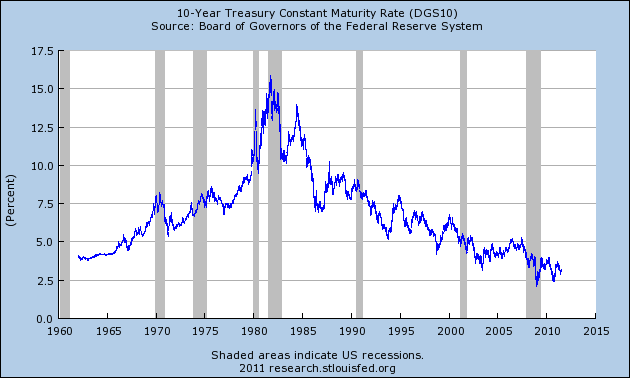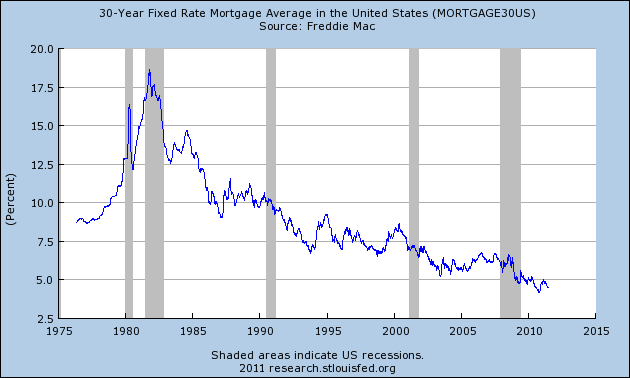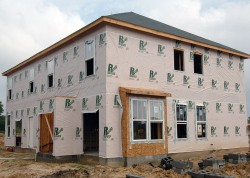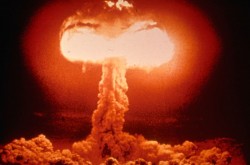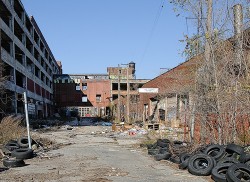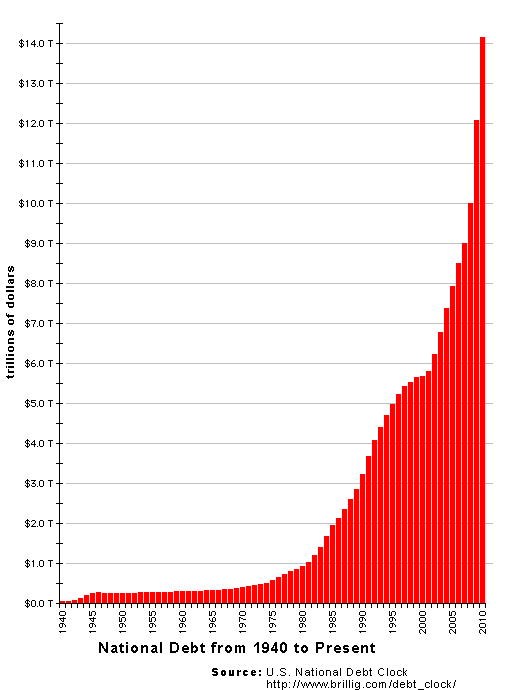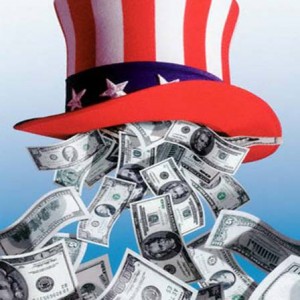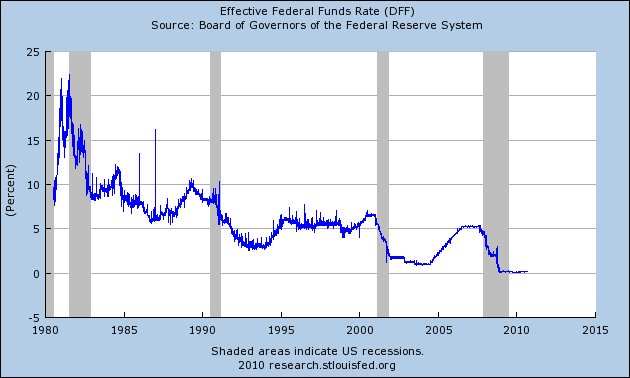 New home sales in the United States are on pace to set a brand new all-time record low in 2011. This will be the third year in a row that new home sales have set a new record low. Sadly, this is yet another sign that the U.S. economy continues to grow weaker. Back in 2005, more than four times as many new homes were being sold as are being sold today. The home building industry is one of the central pillars of the U.S. economy, and the fact that we are going to set another new record low for home sales in 2011 is a really bad sign for those hoping for an economic recovery. Unlike most of those that work in the financial industry, those that build new homes produce something of lasting value for American families. In addition, millions of Americans have traditionally made a solid living by building and selling new homes. But today the market for new homes has totally dried up and large numbers of those jobs are disappearing. Some of the reasons for this include high unemployment, a glut of foreclosures on the market and the tightening of lending standards on home loans. In order for the U.S. to have anything resembling a healthy economy again, we are going to need a revival in the sale of new homes.
New home sales in the United States are on pace to set a brand new all-time record low in 2011. This will be the third year in a row that new home sales have set a new record low. Sadly, this is yet another sign that the U.S. economy continues to grow weaker. Back in 2005, more than four times as many new homes were being sold as are being sold today. The home building industry is one of the central pillars of the U.S. economy, and the fact that we are going to set another new record low for home sales in 2011 is a really bad sign for those hoping for an economic recovery. Unlike most of those that work in the financial industry, those that build new homes produce something of lasting value for American families. In addition, millions of Americans have traditionally made a solid living by building and selling new homes. But today the market for new homes has totally dried up and large numbers of those jobs are disappearing. Some of the reasons for this include high unemployment, a glut of foreclosures on the market and the tightening of lending standards on home loans. In order for the U.S. to have anything resembling a healthy economy again, we are going to need a revival in the sale of new homes.
But unfortunately, it looks like things are getting even worse. In August, the number of new home sales declined for the fourth month in a row. That is a very troubling sign because typically summer is the best time for new home sales.
Celia Chen, the director of housing economics at Moody’s Analytics, is saying the following about the dismal numbers….
“With job growth at a standstill, the stock market swinging wildly, Congress wrangling over the debt ceiling and the euro zone’s problems sending consumer confidence down, sales of new homes are slipping from an already weak pace.”
When you take a close look at the numbers, it really is shocking to see how far we have fallen.
Back in 1963, the U.S. Census Bureau began monitoring new home sales. Prior to the most recent economic downturn, the record low for new home sales happened in 1982.
In that year, only 412,000 new homes were sold.
Well, that record was broken in 2009.
Then it was broken again in 2010.
And it will be broken again in 2011.
This year, we are on pace to see only 303,000 new homes sold in America.
That is beyond pathetic.
To get an idea of just how bad that is, just check out the following chart which comes from the Calculated Risk blog. The first number is the year, the second number is the total number of new homes sold during that year, and the third number is the total number of new homes sold through the month of August during that year. The number of new homes sold during 2011 is a projected number….
2000: 877 608
2001: 908 644
2002: 973 670
2003: 1,086 759
2004: 1,203 841
2005: 1,283 906
2006: 1,051 756
2007: 776 577
2008: 485 365
2009: 375 261
2010: 323 231
2011: 303 211
As you can see, this will be the fifth year in a row that new home sales have fallen.
And yet the folks on television keep telling us that the recession is over.
The frightening thing is that new home sales are this anemic even with mortgage rates at historic lows.
So what is going to happen once mortgage rates start going up?
It is hard to imagine new home sales getting even worse than they are now.
And we desperately need to get things turned around. New home construction is very good for the economy.
According to the National Association of Home Builders, each new home that is constructed creates the equivalent of 3 jobs for an entire year and generates approximately $90,000 in taxes.
So what is holding things back?
Well, for one thing, if people do not have good jobs they cannot afford to buy new homes.
Back in 1969, 95 percent of all men between the ages of 25 and 54 had a job. In July, only 81.2 percent of men in that age group had a job.
That is a massive problem that needs to be solved.
Unfortunately, our leaders continue to allow millions of our jobs to be shipped overseas.
If you gathered together all of the people in the United States that are “officially unemployed” right now, they would constitute the 68th largest country in the world. It would be a nation larger than Greece.
Secondly, there is a gigantic glut of foreclosed homes on the market right now that is competing with new homes for the few qualified home buyers that are out there.
It is absolutely shocking how many vacant homes there are in some areas of the country.
According to the U.S. Census Bureau, 18 percent of all homes in the state of Florida are sitting vacant. That figure is 63 percent larger than it was just ten years ago.
In the city of Detroit alone, there are more than 33,000 abandoned homes.
Until the number of vacant homes goes down, there is just not going to be a need in the marketplace for a lot of new homes.
Sadly, it looks like another huge wave of foreclosures could be on the way.
According to the Mortgage Bankers Association, at least 8 million Americans are currently at least one month behind on their mortgage payments.
That is more than a bit frightening.
Thirdly, lending standards on home loans have dramatically changed.
Five or six years ago, if you were breathing you could get a home loan.
Even the family dog could get a home loan.
But now the pendulum has swung to the opposite end of the spectrum.
Applying for a mortgage today is like getting a series of proctology exams from a very rude and very uncaring doctor.
Many mortgage lenders today will deny you at the slightest hint of a problem.
Even if you have a very high income, near perfect credit, very little debt and a long history of financial responsibility there is still a very good chance that you will be turned down.
If you don’t believe this, just start talking to people that have applied for home loans lately.
A ton of pending home sales are being cancelled because potential home buyers simply cannot get approved.
Until some sort of “balance” is restored to the mortgage lending process, this is going to continue to be a major problem.
It would be nice if I could tell you that things are going to get better soon, but the truth is that there are all kinds of signs that the U.S. economy is getting even worse and there are all kinds of signs that the global financial system is on the verge of a massive nervous breakdown.
So if you make a living by building or selling new homes, you might want to find other ways to supplement your income for a while.
Things are not going to turn around significantly any time soon.

